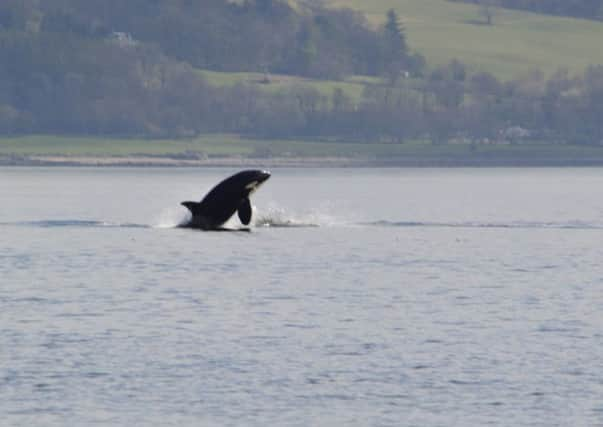Ilona Amos: You don't need your own yacht to spot sea life '“ take a ferry


As it turns out, the animals were members of a well-known family of orcas usually seen in waters around Shetland. There are seven animals in the pod, known as 64, including a calf thought to be around 18 months old. Also in the group was a male named Busta. We know all this because of the plethora of pictures and videos taken by members of the public, which allowed experts at tour operators Shetland Wildlife to identify the individuals by their dorsal fins and markings.
Pod 64 has so far only ever been seen in waters around Scotland, generally in the very far north. Last July, however, they were sighted near Ullapool. And now they have come all the way down to the Clyde. The news sparked a stampede of wildlife enthusiasts to the area, keen to catch a glimpse of the rare visitors.
Advertisement
Hide AdAdvertisement
Hide AdAlthough I grew up near Skye – at a time when you still had to take a boat ‘over the sea’ to the island – and lived on the Isle of Bute for a year, regularly crossing the Clyde, I have never been lucky enough to witness the sort of spectacle enjoyed by ferry passengers at the weekend. But I’ll admit I have spent many a journey peering into the great grey yonder in hope. My only unexpected successes have involved dolphins – the first time on a trip between Spain and Morocco, and on a few more recent occasions in Plockton, when a pair of females named Gin and Tonic became the star turn on Calum’s Seal Trips for a couple of seasons.
The excitement generated by the appearance of these majestic creatures is a reminder of the enduring – and increasing – appeal of Scotland’s wildlife for locals and tourists alike.
It’s apparently not that exceptional to see whales, dolphins and porpoises, not to mention basking sharks, otters, eagles and rare seabirds, from a the deck of a ferry. CalMac has even appointed a dedicated wildlife officer to help educate passengers and crews on what to look out for. And the charity Orca has set out some top tips to maximise your chances.
The key is to plan in advance – do some research to get an idea of what animals might be seen on the route you’re taking and at the time of year you’re travelling.
Pick the right crossing – some routes take very different paths to go to the same place, which can dramatically affect the wildlife you’re likely to see. On longer crossings, try to select trips where you can be on deck at first light as it’s often one of the best times to see many species.
Make sure you have any equipment you need – binoculars, camera, perhaps a telephoto lens.
And work as a team with your travelling companions or other passengers – the more eyes you have on the water, the more chance you have of spotting something.
And persevere – the longer you spend watching, the more you are likely to spot some wildlife. It will pay off in the long run.
Advertisement
Hide AdAdvertisement
Hide AdWildlife tourism is becoming increasingly popular, worth more than £65 million a year to the Scottish economy. Iconic species such as sea eagles on Mull, basking sharks near Oban and bottlenose dolphins in the Moray Firth have done wonders to boost footfall and income in their local communities. You don’t have to be afloat to see most of them, but it certainly adds to the adventure.
